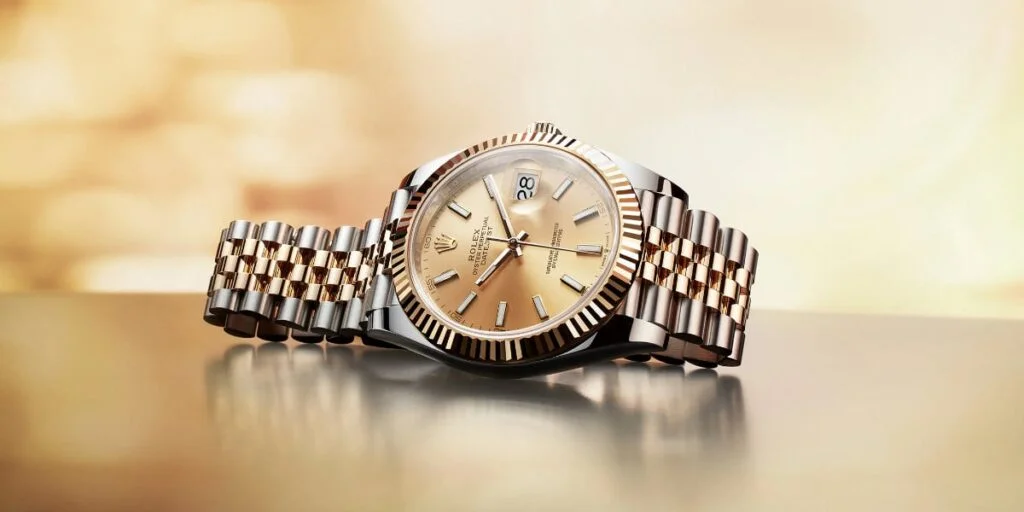Luxury watch enthusiasts and collectors might soon find themselves digging deeper into their pockets as prominent brands such as Rolex, Omega, Cartier, and Breitling announce forthcoming price increases in response to recently imposed tariffs. With watchmakers responding to tariffs, the imposition of tariffs on Swiss imports into the United States has triggered a wave of adjustments within the luxury watch industry, affecting both pricing strategies and market dynamics significantly.

Background of the Tariffs
The scenario began unfolding when former President Donald Trump initially announced severe tariffs of up to 31% on Swiss products. Switzerland, renowned globally as the epicentre of luxury watchmaking, quickly found itself in a state of alarm. Dealers and retailers reacted urgently; some vintage dealers swiftly arranged emergency shipments to preemptively stockpile inventory, anticipating the impact these tariffs would have on the market. The industry breathed a collective sigh of relief when the administration introduced a 90-day postponement of the most extreme tariffs, but the remaining 10% levy has continued to exert considerable pressure on watchmakers and dealers alike.
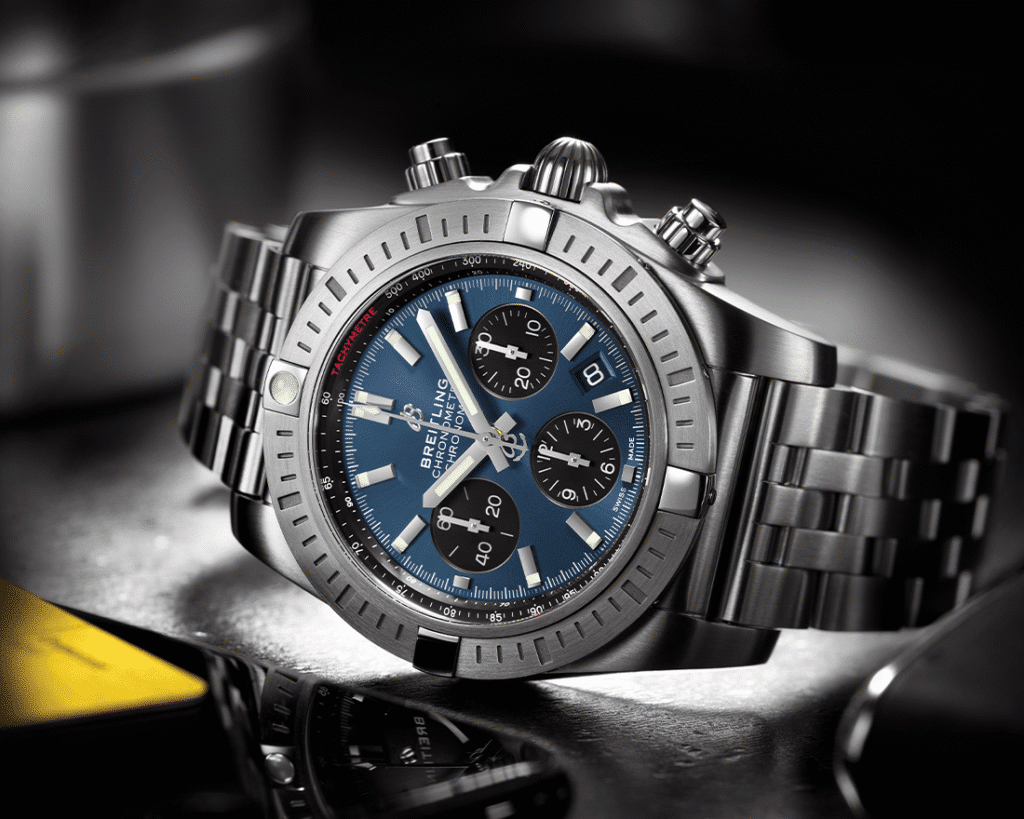
Impact on Brands and Pricing
Rolex, arguably the most iconic name in luxury timepieces, was among the first to confirm price adjustments. Starting May 1, Rolex raised its prices by approximately 3%, a notable shift for collectors and prospective buyers alike. Following Rolex’s move, Omega soon disclosed plans to increase prices by an average of 5% across its collections. These adjustments set the stage for widespread market expectations of similar responses from other major watch manufacturers.
Sources within the industry strongly indicate that additional brands under Richemont and Swatch Group umbrellas, notably Cartier, are also preparing to adjust their retail prices. Breitling, an independent yet equally prestigious watchmaker, will also implement similar changes. Luxury conglomerate LVMH, home to esteemed brands like TAG Heuer and Bvlgari, is similarly expected to raise prices in line with industry trends, with projected increments ranging between 3% and 5%.
The tariffs have not only affected pricing but also narrowed the profit margins available to authorised dealers, who traditionally rely heavily on sales of these high-value items. Reduced margins might further disrupt the sales ecosystem, compelling dealers to rethink strategies for sustaining their businesses amidst increased operating costs.
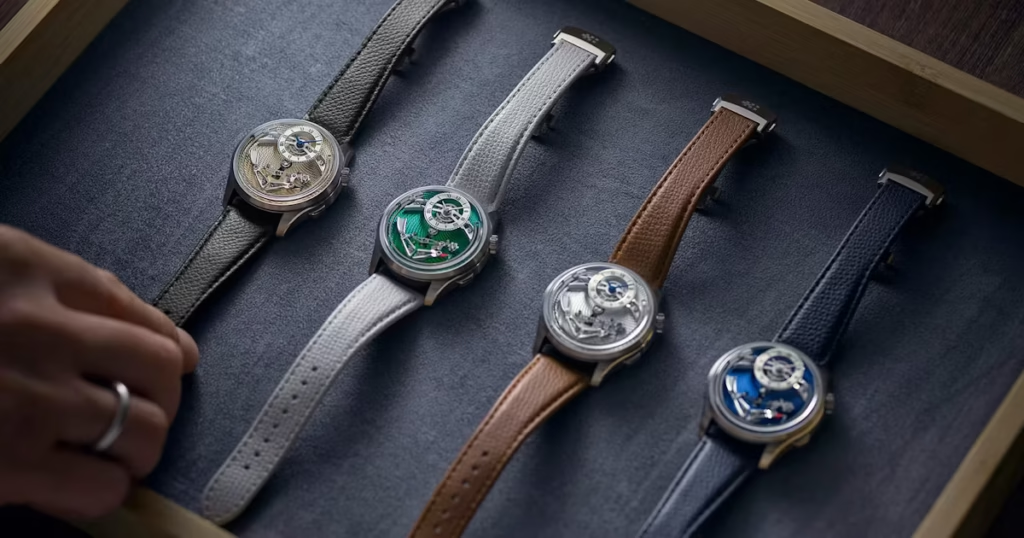
Consumer Impact and Market Dynamics
While a 10% tariff increase might initially appear modest compared to the proposed 31%, the tangible impact on the luxury watch market remains significant. The price hikes brought about by the tariffs have already begun influencing consumer purchasing decisions, particularly among middle-tier collectors and buyers whose budgets are more sensitive to price fluctuations.
Joshua Ganjei, a notable figure at Boston’s European Watch Company, points out that these price hikes are reshaping how enthusiasts engage with the market. He highlights a growing shift toward the secondary market, where pre-owned luxury watches offer more appealing financial propositions compared to new retail purchases. As MSRP climbs, the allure of sourcing watches through alternative channels, such as pre-owned dealerships, intensifies.
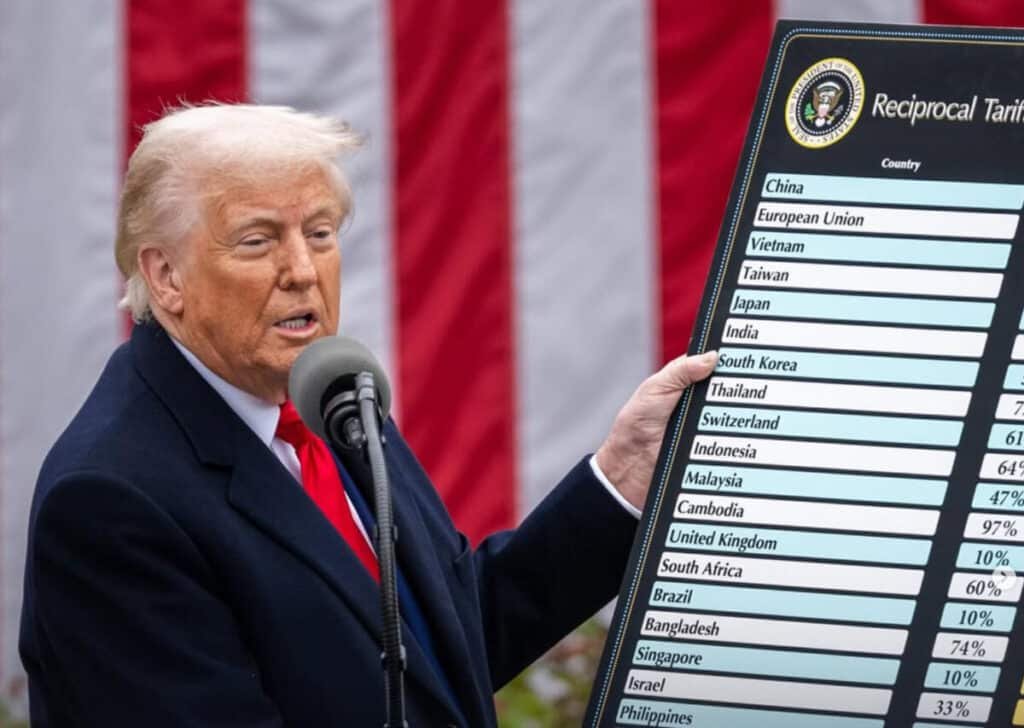
The Secondary Market’s Opportunity as Watchmakers Respond to Tariffs
As prices for new watches rise, the secondary market stands poised to benefit substantially. Collectors seeking to avoid paying increased retail prices are likely to redirect their attention toward pre-owned watches, enhancing the already booming secondary market. This trend presents considerable opportunities for resellers and pre-owned luxury watch specialists who could see a spike in demand and increased sales volume.
Ganjei suggests that tariffs represent not merely a temporary policy shift but rather a fundamental transformation in how American collectors access luxury watches. The secondary market, therefore, is positioned to gain considerable traction, offering more economically accessible alternatives to luxury watch enthusiasts.
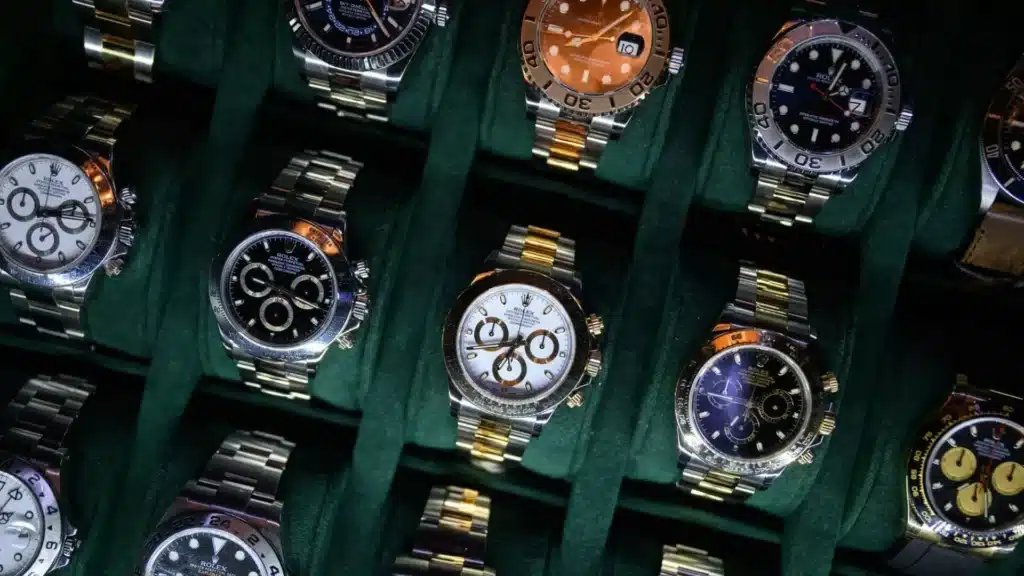
Reactions Among High-End Independent Brands
Interestingly, not all segments of the luxury watch industry express immediate concern over the tariffs. Brands such as H. Moser & Cie, which cater predominantly to high-end collectors less influenced by market volatility, remain relatively unperturbed. Edouard Meylan, CEO of H. Moser & Cie, conveyed confidence despite the unexpected tariff announcements. Meylan emphasised the importance of maintaining strong, long-term relationships with retail partners, stating that most orders placed ahead of these tariffs remain secure.
H. Moser & Cie proactively responded to the initial tariff announcement by swiftly shipping products to US retailers before the potential increase could take effect, demonstrating strategic agility. Such proactive measures reflect how adaptable independent brands can be in navigating unpredictable regulatory landscapes, particularly when supported by loyal, affluent clientele whose buying patterns are resilient to short-term fluctuations.
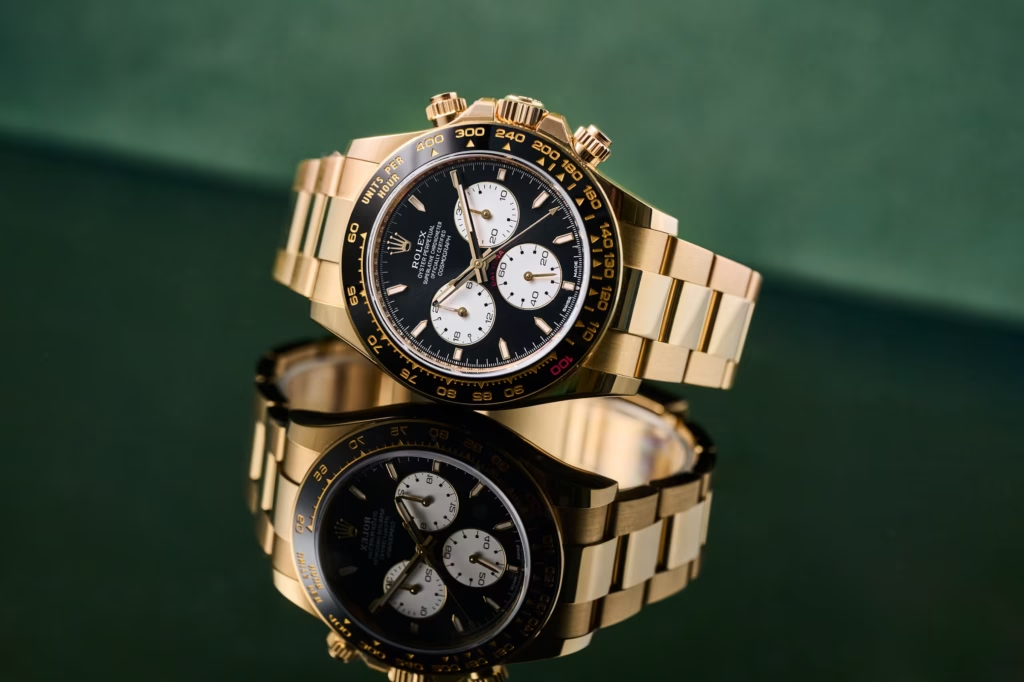
Broader Implications
The ripple effect of these tariffs reaches far beyond consumers’ wallets. The luxury watch industry, notably reliant on intricate global supply chains and sensitive to international policy shifts, faces potential challenges in maintaining steady operations and profitability. While major brands and high-end independents might weather the storm, smaller retailers and dealers may face disproportionate struggles due to shrinking margins and potentially declining sales.
Moreover, if the tariffs dampen overall demand, watch manufacturers could face slower inventory turnover and disrupted production schedules.
This scenario would not only impact manufacturers directly but also reverberate through the broader luxury goods market, affecting ancillary businesses and associated industries reliant on robust luxury goods sales.
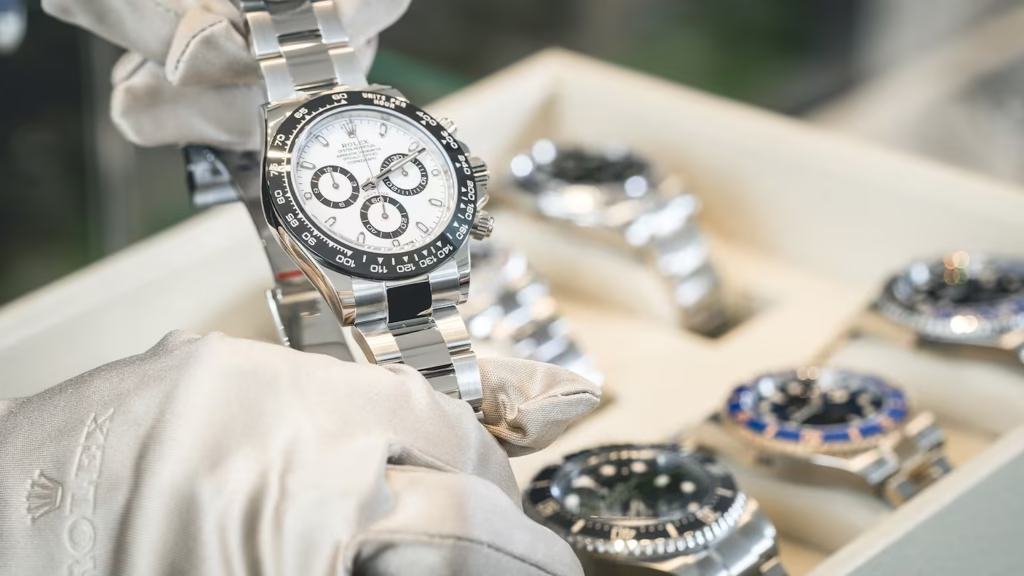
Consumer Strategies Moving Forward
For consumers determined to purchase specific luxury watches despite higher prices, timing and market awareness become critical. Understanding market dynamics, tracking price adjustments, and considering strategic buying windows could mitigate some impacts of these price increases. Additionally, buyers may increasingly leverage relationships with trusted secondary market dealers, ensuring they obtain desired models at comparatively favourable prices.

Conclusion
The introduction of tariffs has undeniably shaken the luxury watch market, prompting brands like Rolex, Omega, Cartier, Breitling, and others to revise their pricing strategies upward. While immediate consumer responses vary widely depending on economic factors and personal purchasing power, the long-term implications could reshape luxury watch buying patterns profoundly.
Whether these tariffs remain a short-lived challenge or evolve into a prolonged reality, their initial impact is unmistakably significant. Collectors and buyers must now navigate a market where increased prices are the new norm, prompting a reevaluation of buying strategies and market interactions. This shift may permanently alter the landscape of luxury watch collecting, highlighting adaptability as the defining trait for brands, retailers, and consumers alike in navigating an uncertain future.



